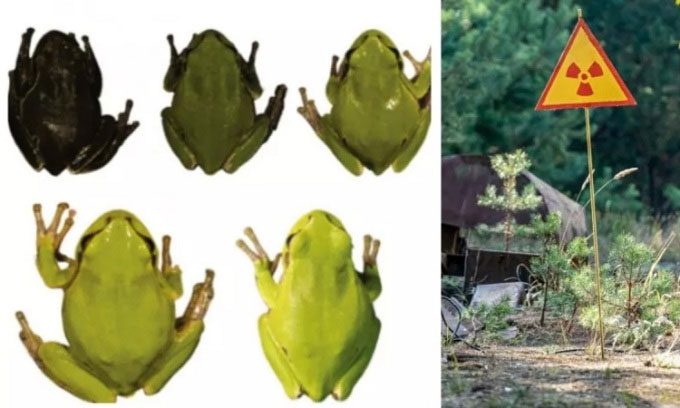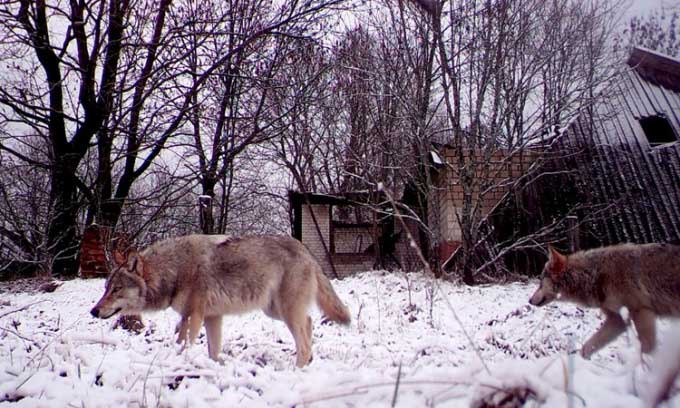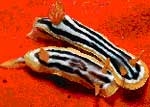Some Animals in Chernobyl Have Become Distinct After the 1986 Nuclear Disaster.
On April 26, 1986, an explosion and fire at the Chernobyl Nuclear Power Plant in Ukraine released radioactive dust into the atmosphere. Thirty workers died immediately due to the disaster, but in the long term, the death toll from radiation exposure is estimated to be in the thousands. According to a report from the European Parliament, the explosion released radiation into the atmosphere that was 400 times greater than that of the atomic bomb dropped on Hiroshima, with radioactive dust falling over a vast area of Europe. This is considered the worst nuclear disaster in history.
The Soviet Union quickly established a “Chernobyl Exclusion Zone” covering 2,700 km2 around the plant, constructing a fence with a radius of about 30 km and prohibiting public access due to contamination.
Since 2011, regional managers have deemed the exclusion zone safe for visitation. The number of tourists visiting the area has gradually increased. Although some regions within the exclusion zone still have high radiation levels, visiting remains relatively safe if tourists adhere to guidelines.
To date, much of the exclusion zone remains abandoned, becoming a habitat for wildlife. So how does the radiation in the exclusion zone affect these animals? Scientists have conducted studies and found that some animals have begun to exhibit differences compared to those in other locations.
Black Mutant Frogs

The skin color change of frogs exposed to radiation. (Image: Evolutionary Applications).
In a study published in the journal Evolutionary Applications in 2022, radiation from the Chernobyl plant led to changes in the skin color of eastern tree frogs (Hyla orientalis) in Ukraine, causing their skin to change from green to black.
“Frogs with darker skin were found at locations closest to areas with high radiation levels at the time of the disaster. Tree frogs living in the Chernobyl exclusion zone have significantly darker skin than those living outside,” the research team, including expert Pablo Burraco from Uppsala University, stated.
They observed that the darker coloration may not be due to random mutations but rather an adaptive response to protect the frogs from high radiation. Dark pigmentation serves as protection against various radiation sources by neutralizing free radicals and reducing DNA damage, particularly melanin, which is seen as a buffering mechanism against ionizing radiation. Melanin is responsible for dark skin and eye color in many animals, including humans, but it may also mitigate the negative effects of radiation.
Superpower Bacteria
Bacteria found on the wings of swallows in Chernobyl have been discovered to withstand gamma radiation better than those from other locations. When exposed to radiation, bacteria from Chernobyl can still reproduce and thrive better than bacteria from elsewhere.
“The long-term effects of radiation in natural populations may act as an important selective pressure for traits that enhance bacterial survival in certain environments,” according to a study published in the journal Scientific Reports in 2016. The research was conducted by expert Mario Xavier Ruiz-González from Paul Sabatier University and colleagues.
Cancer-Resistant Wolves

Wolves roaming in the Chernobyl exclusion zone. (Image: Reuters).
A new study published earlier this year shows that the wolf population living in the Chernobyl exclusion zone is genetically distinct from those living outside the area. Notably, radiation-exposed wolves seem to have developed protective mutations that increase their survival rate when facing cancer. The study was conducted by Cara Love, an evolutionary biologist and ecotoxicologist at Princeton University, who has studied wolves in Chernobyl for the past decade.
The research findings indicate that wolves in the exclusion zone are exposed to over 11.28 millirems of radiation daily throughout their lives, which is more than six times the permissible level for workers. The study also noted that wolves exhibit immune system changes similar to those experienced by cancer patients undergoing radiation therapy. Furthermore, genetic analyses reveal that part of the wolf genome has developed cancer resistance capabilities.
Genetically Distinct Dogs

Stray dogs in the “ghost town” of Pripyat within the Chernobyl exclusion zone, Ukraine. (Image: Dimitar Dilkoff/Agence France-Presse).
A detailed study of DNA published in the journal Science Advances in 2023 focused on 302 stray dogs living in the Chernobyl exclusion zone, showing that they are genetically distinct from both purebred dogs and those bred freely. The research team noted that most of the dogs they studied appear to be descendants of pets that residents had to leave behind during evacuation.
Initially, the research team thought that the dogs living together for too long might become similar. However, through DNA analysis, they could easily distinguish between dogs living in areas with high, low, and moderate radiation exposure. The dogs provide an excellent means to examine the impact of this environmental condition on mammals in general, according to co-author Tim Mousseau, a biology professor at the University of South Carolina.





















































